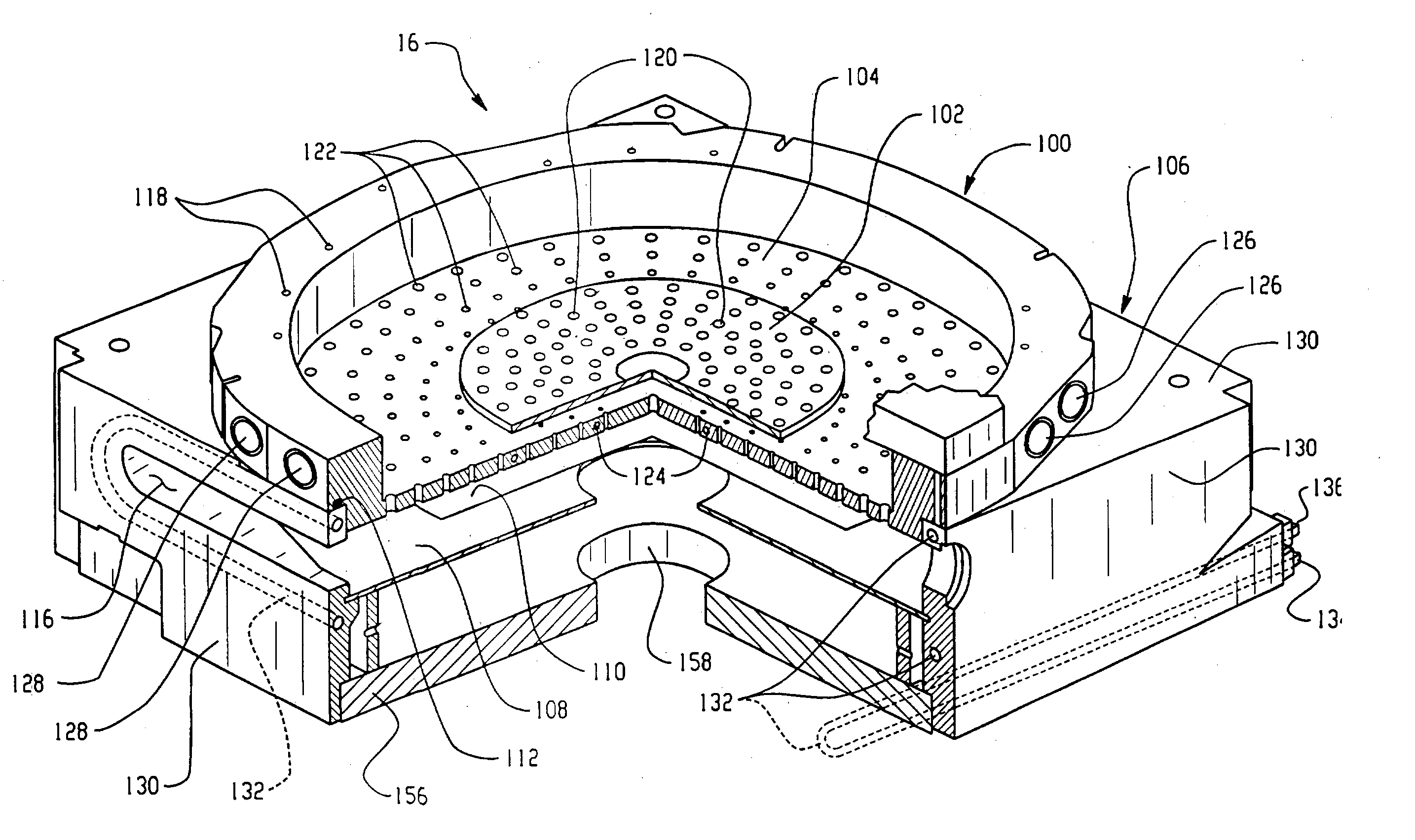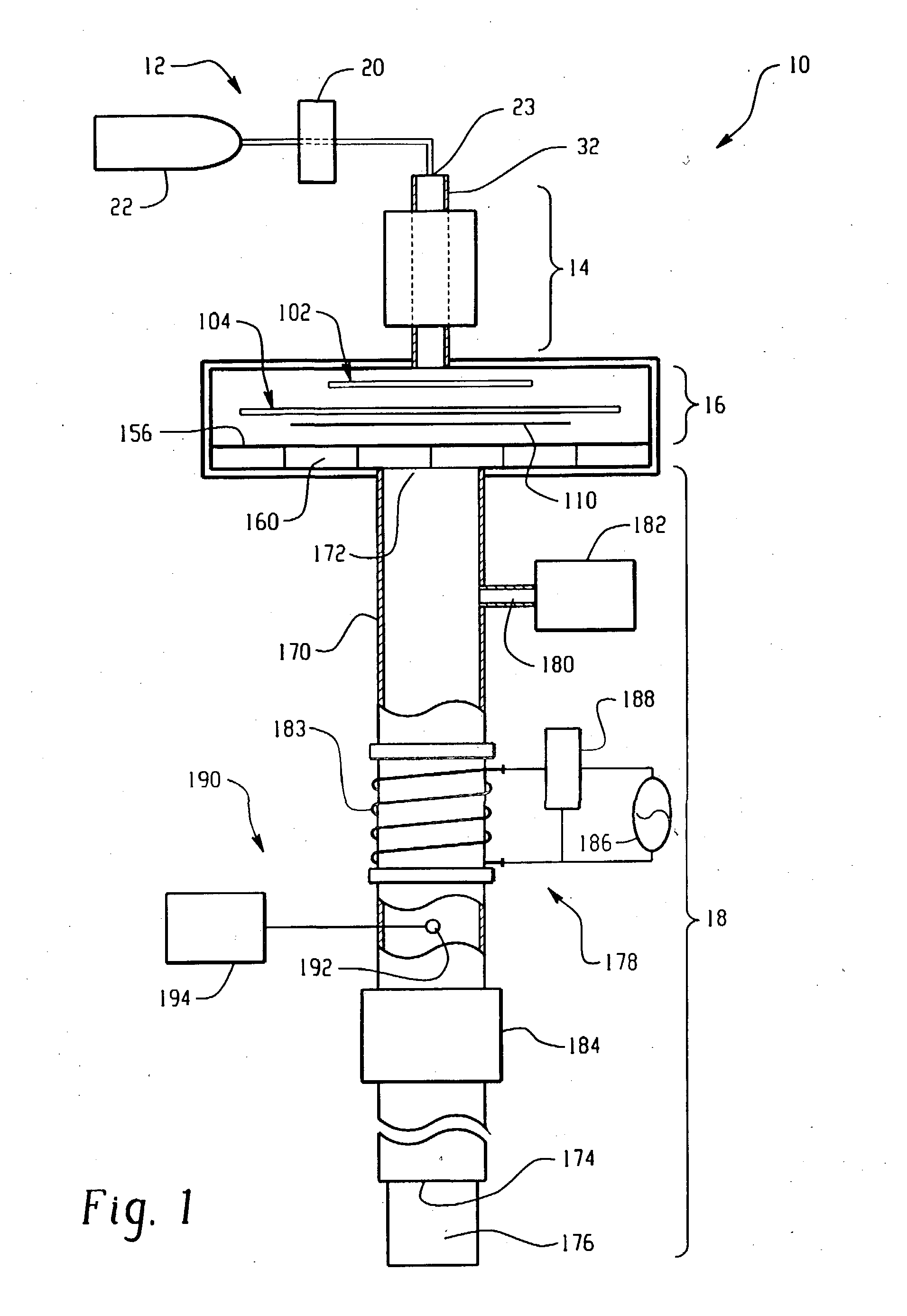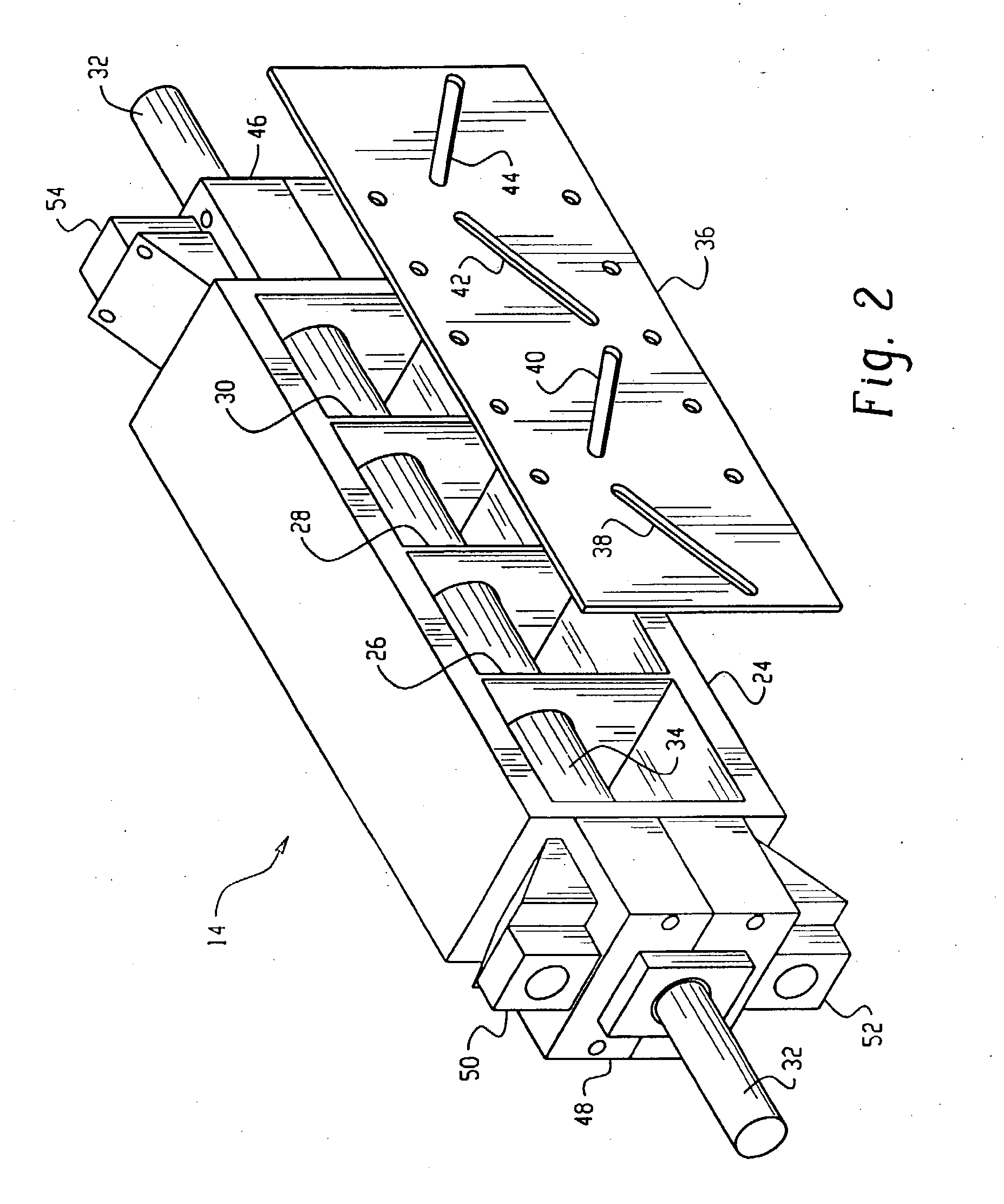Plasma apparatus, gas distribution assembly for a plasma apparatus and processes therewith
a technology of plasma apparatus and gas distribution assembly, which is applied in the direction of greenhouse gas capture, chemical vapor deposition coating, coating, etc., can solve the problems of limiting the overall chip speed, increasing the dielectric constant, and material loss, and achieves high ashing selectivity
- Summary
- Abstract
- Description
- Claims
- Application Information
AI Technical Summary
Benefits of technology
Problems solved by technology
Method used
Image
Examples
Embodiment Construction
[0084] In this example, plasma uniformity was examined using different dual baffle plate configurations in a Fusion ES3 downstream microwave plasma asher commercially available from the Axcelis Technologies Corporation. Multiple 300 mm silicon wafers were coated with 0.75 microns of AZ1505 photoresist under identical conditions and exposed to a 4% hydrogen in helium plasma at 1.1 torr at the temperature indicated in Table 1. AZ1505 photoresist is commercially available by the Hoechst Corporation. The upper baffle plates were identical for each configuration. A control lower baffle plate consisting of 420 apertures evenly spaced across a 13" circular area was employed. Each aperture was 0.113 inches in diameter. Plasma uniformity for the control was compared to two different configurations in accordance with the teachings of the present disclosure. Configuration 1 consisted of 570 apertures evenly spaced across a 15-inch circular area. Apertures within a 5-inch radius from the center...
PUM
| Property | Measurement | Unit |
|---|---|---|
| Fraction | aaaaa | aaaaa |
| Fraction | aaaaa | aaaaa |
| Fraction | aaaaa | aaaaa |
Abstract
Description
Claims
Application Information
 Login to View More
Login to View More - R&D
- Intellectual Property
- Life Sciences
- Materials
- Tech Scout
- Unparalleled Data Quality
- Higher Quality Content
- 60% Fewer Hallucinations
Browse by: Latest US Patents, China's latest patents, Technical Efficacy Thesaurus, Application Domain, Technology Topic, Popular Technical Reports.
© 2025 PatSnap. All rights reserved.Legal|Privacy policy|Modern Slavery Act Transparency Statement|Sitemap|About US| Contact US: help@patsnap.com



